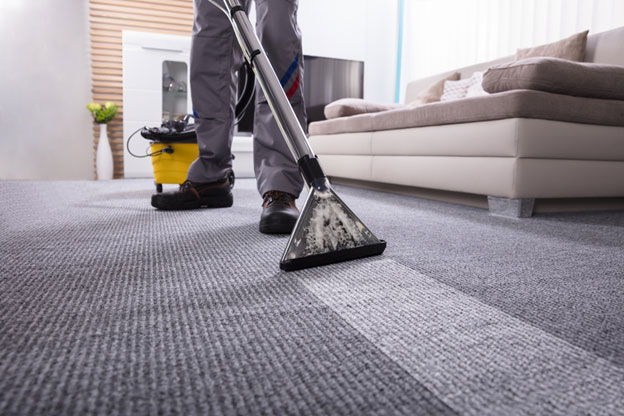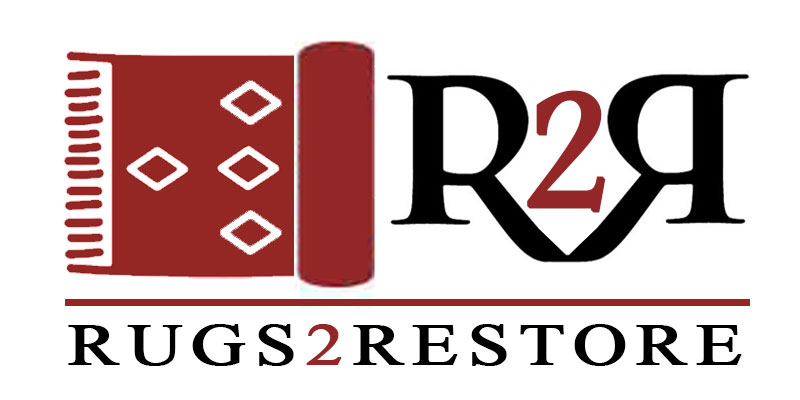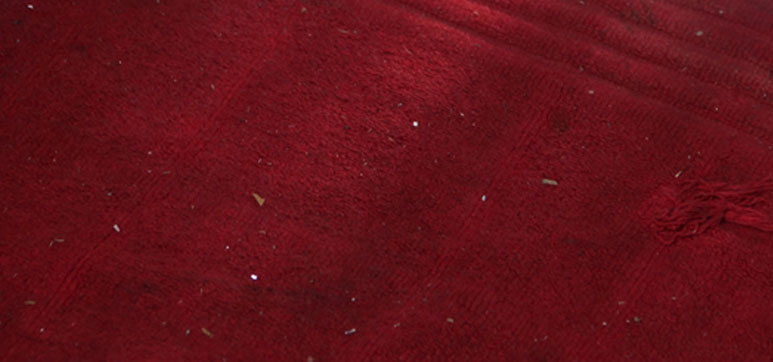Oriental rugs are beautiful and valuable pieces of art that have been crafted by skilled artisans for centuries. They are prized possessions that require proper care and maintenance to preserve their beauty and longevity. Oriental rugs come in a wide range of designs, colors, and patterns, and they are made from a variety of natural fibers such as wool, silk, and cotton.
If you own an Oriental rug, it is important to know how to care for it properly. The dos and don’ts of Oriental rug cleaning are essential to understand to ensure that your rug lasts for many years to come. In this comprehensive guide, we will discuss everything you need to know about cleaning and maintaining your Oriental rug.
Understanding Oriental Rugs
Before we delve into the dos and don’ts of Oriental rug cleaning, let us first understand what Oriental rugs are. Are they the same as Persian Rugs?
Oriental rugs and Persian rugs are often used interchangeably, but there is a subtle difference between the two. Oriental rugs are hand-knotted or hand-woven rugs that are made in various countries across Asia, including Iran, Turkey, India, and China. On the other hand, Persian rugs are a specific type of Oriental rug that is made in Iran. This means that all Persian rugs are Oriental, but not all Oriental rugs are Persian, so it’s important to keep this distinction in mind when researching rug maintenance tips.
Design And Materials Used
Oriental rugs are known for their intricate designs and vibrant colors, which are often inspired by the local culture and traditions of the country where they are made. They are typically made from natural fibers, such as wool, silk, or cotton, and are woven using a traditional technique that has been passed down for generations.
Each Oriental rug is unique, with its own distinct design and pattern. Some of the most popular Oriental rug designs include floral, geometric, and pictorial motifs, which are often combined to create a one-of-a-kind masterpiece.
Oriental rugs are not only beautiful but also valuable. They are often considered to be an investment and can appreciate in value over time, making them a prized possession for many collectors and homeowners.
Now that we have a better understanding of what Oriental rugs are let’s discuss the dos and don’ts of Oriental rug cleaning to ensure that your rug retains its beauty and value for years to come.
The Dos of Oriental Rug Cleaning

To ensure that your Oriental rug lasts for generations, here are some dos that you should follow:
Regular Vacuuming
The first step in Oriental rug cleaning is regular vacuuming. Vacuuming removes loose dirt, dust, and debris that accumulate on the surface of the rug. You should vacuum your rug at least once a week or more frequently if it is in a high-traffic area. Use a vacuum with a soft-bristled brush attachment or no attachment, and avoid using a beater bar, which can damage the rug fibers. Vacuum the rug in the direction of the pile, not against it, and be gentle around the edges and fringes.
Blotting Spills Immediately
Accidents happen, and spills are inevitable, but how you handle them can make a big difference in the outcome. The key is to blot the spill immediately with a clean, white cloth or paper towel. Don’t rub or scrub the stain, as this can damage the fibers and spread the stain. Instead, blot the stain gently from the outer edges inward, using a clean section of the cloth or towel for each blot. If the spill has already dried, use a damp cloth to rehydrate it before blotting.
Spot Cleaning
If you notice a stain on your Oriental rug that doesn’t come off with regular vacuuming or blotting, it’s time for spot cleaning. Spot cleaning involves using a cleaning solution and a clean, white cloth to remove the stain. However, it’s crucial to use the right cleaning solution for your rug type and avoid using harsh chemicals that can damage the fibers. Always test the cleaning solution on a small, inconspicuous area of the rug before using it on the stain. This will help you determine whether the product is safe to use and will not damage the fibers or colors.
Professional Cleaning
While regular vacuuming and spot cleaning can keep your Oriental rug looking clean and fresh, it’s essential to have it professionally cleaned at least once a year. Professional cleaning involves deep cleaning the rug to remove dirt, dust, and other contaminants that cannot be removed by regular vacuuming. Professional cleaners have the expertise, equipment, and cleaning solutions to clean your rug safely and effectively without damaging the fibers. Look for a professional cleaner that specializes in Oriental rugs and has experience with the specific type of rug you have.
Protecting The Rug From Sunlight
Sunlight can fade and damage your Oriental rug over time, especially if it’s exposed to direct sunlight for extended periods. To protect your rug from sunlight, avoid placing it in areas with direct sunlight, such as near windows or doors. If you must place it in a sunny area, use curtains, blinds, or shades to block the sunlight during the day.
Rotation
Rotate your rug every six months to ensure even wear and tear. This is especially important for rugs placed in high-traffic areas.
Padding
Using a rug pad underneath your Oriental rug can help protect it from wear and tear and prevent slipping or sliding. A rug pad can also provide extra cushioning and insulation, which can help reduce noise and improve comfort.
Don’ts of Oriental Rug Cleaning

To avoid damaging your Oriental rug, here are some things that you should avoid:
Avoid Using Harsh Chemicals
Harsh chemicals such as bleach, ammonia, vinegar, and other acidic or alkaline cleaning agents should never be used on an Oriental rug. These chemicals can damage the fibers of your Oriental rug and cause discoloration or even disintegration. Avoid using these chemicals for spot cleaning or any other cleaning purposes. Stick to mild cleaning solutions that are specifically designed for Oriental rugs.
Don’t Use Excessive Water
Using excessive water can damage the fibers of your Oriental rug and cause it to shrink or even fall apart. When spot cleaning, use a small amount of water and blot the stain gently. Avoid using a steam cleaner or a hot water extraction machine, as these can saturate the rug with water and cause irreparable damage.
Leaving Spills Unattended
Leaving spills unattended can cause stains to set in and become difficult to remove. Always blot spills immediately and clean the area as soon as possible.
Not Rotating
Not rotating your Oriental rug can cause uneven wear and tear and lead to damage over time. Make sure to rotate your rug every six months.
Don’t Scrub Stains Vigorously
Scrubbing stains vigorously can damage the fibers of your Oriental rug and spread the stain further. Instead, blot the stain gently using a clean, white cloth or paper towel. If the stain persists, use a mild cleaning solution and a clean, white cloth to blot the stain gently.
Don’t Ignore Damages
If you notice any damage on your Oriental rug, such as holes, tears, or frayed edges, don’t ignore them. These damages can worsen over time and require costly repairs or even replacement. Address damages promptly by having a professional Oriental rug repair service inspect and repair your rug.
Don’t Place Heavy Furniture on the Rug
Placing heavy furniture on your Oriental rug can crush the fibers and cause permanent indentations. Avoid placing heavy furniture directly on the rug, or use furniture pads to distribute the weight evenly.
DIY Oriental Rug Cleaning
While professional cleaning is recommended every few years, there are some things that you can do to maintain your Oriental rug in between cleanings:
Mild Cleaning Solutions
Use a mild cleaning solution made of equal parts water and white vinegar to remove stains and dirt from your Oriental rug. Mix the solution in a spray bottle and apply it to the affected area. Let the solution sit for a few minutes, then blot the area with a clean cloth or paper towel.
Baking Soda
Baking soda is a natural deodorizer that can help remove odors from your Oriental rug. Sprinkle baking soda over the rug, let it sit for a few hours, then vacuum it up.
Cornstarch
Cornstarch can help absorb excess oil or grease from spills on your Oriental rug. Sprinkle cornstarch over the affected area, let it sit for a few hours, then vacuum it up.
Brushing
Gently brushing your Oriental rug with a soft-bristled brush can help remove dirt and debris from the fibers. Make sure to brush in the direction of the nap to avoid damaging the fibers.
Spot Cleaning
For small stains, spot cleaning can be done by mixing a few drops of dishwashing liquid with warm water and applying it to the stain. Blot the area with a clean cloth until the stain is removed, then rinse the area with clean water and blot dry.
Conclusion
Oriental rugs are beautiful and valuable possessions that require proper care and maintenance to retain their beauty and value. By following the dos and don’ts of Oriental rug cleaning and taking steps to maintain your rug, you can ensure that it stays clean, beautiful, and valuable for years to come. Remember to avoid harsh chemicals, excessive water, and vigorous scrubbing and to address damages promptly.
In addition, it’s important to have your Oriental rug professionally cleaned at least once a year to remove dirt, stains, and allergens and to prevent damage to the fibers. By following these tips and taking good care of your Oriental rug, you can enjoy its beauty and value for generations to come.

